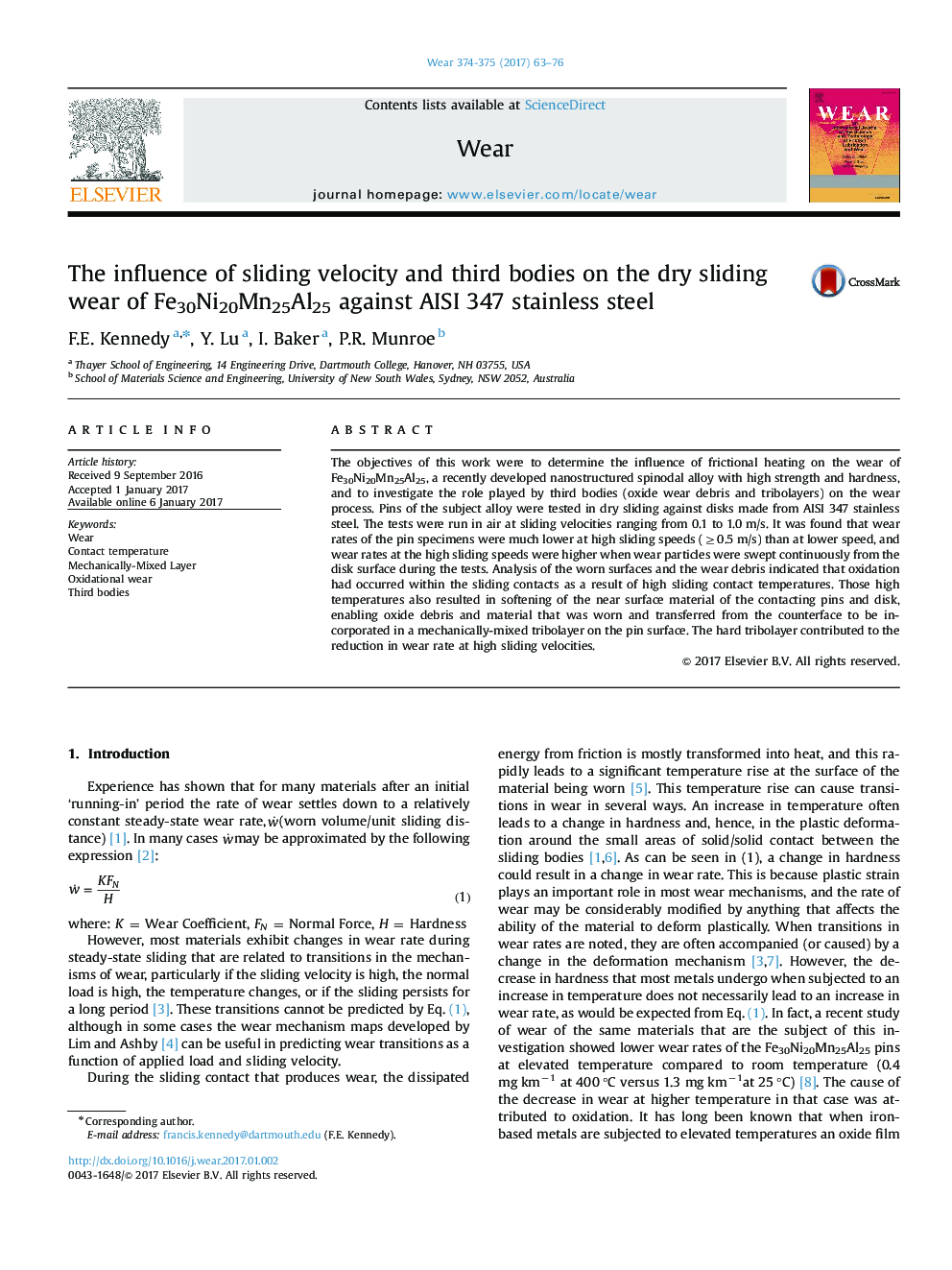| Article ID | Journal | Published Year | Pages | File Type |
|---|---|---|---|---|
| 4986807 | Wear | 2017 | 14 Pages |
Abstract
The objectives of this work were to determine the influence of frictional heating on the wear of Fe30Ni20Mn25Al25, a recently developed nanostructured spinodal alloy with high strength and hardness, and to investigate the role played by third bodies (oxide wear debris and tribolayers) on the wear process. Pins of the subject alloy were tested in dry sliding against disks made from AISI 347 stainless steel. The tests were run in air at sliding velocities ranging from 0.1 to 1.0 m/s. It was found that wear rates of the pin specimens were much lower at high sliding speeds (â¥0.5 m/s) than at lower speed, and wear rates at the high sliding speeds were higher when wear particles were swept continuously from the disk surface during the tests. Analysis of the worn surfaces and the wear debris indicated that oxidation had occurred within the sliding contacts as a result of high sliding contact temperatures. Those high temperatures also resulted in softening of the near surface material of the contacting pins and disk, enabling oxide debris and material that was worn and transferred from the counterface to be incorporated in a mechanically-mixed tribolayer on the pin surface. The hard tribolayer contributed to the reduction in wear rate at high sliding velocities.
Related Topics
Physical Sciences and Engineering
Chemical Engineering
Colloid and Surface Chemistry
Authors
F.E. Kennedy, Y. Lu, I. Baker, P.R. Munroe,
